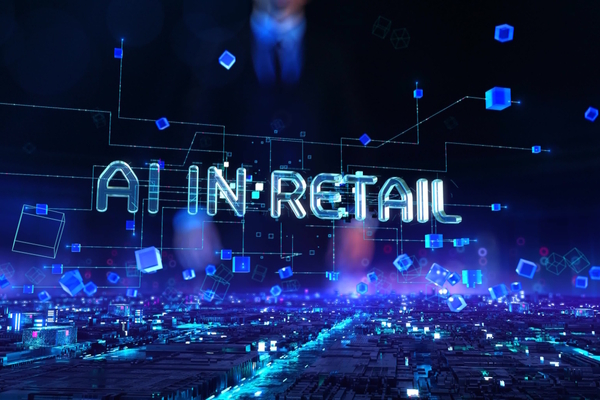AI: specialisation is the right choice
Gastón Milano at Globant Enterprise AI explains how healthy specialisation is helping UK firms choose the right AI models

UK businesses are rethinking how they use artificial intelligence (AI), moving beyond the rapid adoption of generalist chatbots to focus, instead, on models built for specific tasks. Analysts say this shift marks a maturing phase for AI, as organisations learn to integrate different systems and measure results rather than chase the most hyped technology.
For organisations, this means experimenting with a range of tools that best fit their needs, rather than the most talked-about one.
Healthy competition, clearer choices
Recent developments reflect this “healthy specialisation” in action. For instance, the release of OpenAI’s GPT-5.1 is the latest iteration of one of the world’s widely adopted AI tools. Open AI, Anthropic (Claude 4.5) and Google (Gemini 3.0) continue to iterate rapidly. Their models now show distinct strengths, from coding and structured reasoning to retrieval-augmented analysts and multimodal generation.
This variety signals a healthy competition among rival AIs that fuels innovation. It’s also a recognition that no single model can ever hope to meet every requirement. For businesses, that gives them the flexibility to choose and combine the right tools for their specific needs, rather than chasing whatever is the most hyped. Within every industry, the model fit for them depends on context, objectives and data needs.
Matching models to workflows
For example, financial services firms may prioritise compliance and risk management, selecting models designed to detect and prevent fraud. Healthcare organisations, on the other hand, might decide to focus on patient safety and efficiency, benefiting from predictive models for early disease detection, optimising staffing schedules and medical equipment. Creative sectors, meanwhile, might benefit from AI tools that blend media such as text, image and audio. In other words, it’s about selecting the right AI model for the right job.
This approach creates an opportunity for UK services firms to integrate multiple models into their workflows. What’s more, this trend is already reflected within some sectors. For example, around one-third of AI use cases in UK financial services are delivered through third-party providers, showing how firms are experimenting with varied chatbots and partnerships.
The real challenge, however, is how well its chosen AIs integrate into existing workflows. A recent study by MIT – The GenAI Divide: STATE OF AI IN BUSINESS 2025 notes that the biggest barrier to success is not model quality or data availability but poor integration, as many AI pilots operate in isolation from the systems and the people they are meant to support.
To move beyond this, firms should consider a more strategic approach and one that uses AI as part of their core organisational structure. That means starting with the business problem they want to solve, not the technology. The right model will be the one that aligns with operational goals and complements the people who use it.
Scaling AI through cultural readiness
Once suitable models are in place, the next challenge is making them work at scale. Legacy systems and fragmented data continue to slow progress, but these challenges can be overcome with clear structures, skilled teams and a culture that embeds accountability into every stage of deployment.
After all, AI delivers the greatest value when it is embedded across teams rather than confined to innovation labs. As such, security and compliance need to evolve alongside deployment, while human expertise provides the oversight and accountability that technology alone cannot replace.
Across industries, this shift is becoming clearer. In the UK, 31% of businesses now have a comprehensive AI strategy in place, with many organisations moving away from isolated experiments. By encouraging experimentation through specialisation, these strategies are laying the groundwork for more effective and scalable use of AI.
Opportunity through realism
AI won’t be won by knowing how to chain models or assemble a RAG. It demands a deep grasp of the business and of engineering and the stack will mix old and new.
Generative AI’s natural‑language superpower only turns into enterprise impact when it’s married to disciplines that already work. This means clean data contracts, observability, security and accountable governance. You can apply this playbook across industries, in entertainment, sport, energy, life sciences and financial services, for example. The savings are measurable. The “magic” isn’t: results come from expertise, discipline and integration.
AI is here to stay and it will power a new investment cycle; but it will also take time, discipline and iteration to fully unlock. It will reward firms that reinvent both technology and business models. Competition among models gives businesses more choice than ever. The leaders will turn that choice into outcomes.
Together, they mark the start of a more sustainable AI era, where businesses that prioritise integration, governance and human-centred design will turn experimentation into an advantage.
Gastón Milano is CTO of Globant Enterprise AI
Main image courtesy of iStockPhoto.com and mikkelwilliam

Business Reporter Team
You may also like
Most Viewed
Winston House, 3rd Floor, Units 306-309, 2-4 Dollis Park, London, N3 1HF
23-29 Hendon Lane, London, N3 1RT
020 8349 4363
© 2025, Lyonsdown Limited. Business Reporter® is a registered trademark of Lyonsdown Ltd. VAT registration number: 830519543





